In case you haven’t heard, DonorDreams blog is hosting for the second year in a row the Nonprofit Blog Carnival in the month of May. This year’s theme revolves around building loyalty among various non-profit stakeholder groups such as donors, employees, volunteers, etc. If you are a blogger and looking for the “Call for Submissions,” then click here. The carnival will be posted right here at DonorDreams blog on Wednesday, May 28, 2014. Stay tuned!
In the interest of building momentum, we’ve dedicated the entire month of blog posts to this topic. We’re specifically focusing on what a variety of non-profit organizations are doing (or are looking at doing) to build loyalty.
Today’s blog post is from Nick Jones, who is the Director of Operations at Boys & Girls Clubs of Columbus in Ohio.
Lead a Team; Don’t Manage a Group
Boys & Girls Clubs of Columbus
By Nick Jones
Guest Blogger
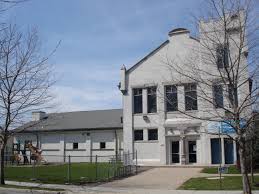 My first days (and those leading up to) as the Director of Operations for the Boys & Girls Clubs of Columbus — an after-school program in Columbus, Ohio — were solely focused on what fun and engaging programs I could implement for the kids.My thoughts were consumed with:
My first days (and those leading up to) as the Director of Operations for the Boys & Girls Clubs of Columbus — an after-school program in Columbus, Ohio — were solely focused on what fun and engaging programs I could implement for the kids.My thoughts were consumed with:
- Open gym basketball with the teens
- Arts and crafts with the younger members
- Interactive homework help session
I was excited about the opportunity to work with kids again, having just taken two years away from the field.
However, as a new manager, I quickly realized my time would not be consumed with facilitating a program for kids, but instead with our staff, who in turn worked directly with the kids.This was a painful realization, as my true passion was in building positive, developmental and long-lasting relationships with young people, especially those who need us most.
It was this realization, though, that was the first step towards building a loyal TEAM of professionals I now believe I have.
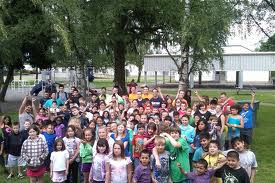 Team vs. Group
Team vs. Group
Before moving forward, I want to make sure I emphasize the importance of the word, “team.”
In one of my MBA courses, a professor spent almost an entire class differentiating between “team” and a “group.” He explained that a team takes a long time to build. In fact, he said, many groups never develop into teams.
Here are two points I took away from that lecture:
- A team is willing to praise one another as well as hold each other all accountable (it isn’t just the manager’s responsibility)
- A team can have confrontations and disagreements among themselves. However, once it’s time to “hit the floor” and perform, everyone needs to be on the same page and drive towards one common goal.
Finding Your People
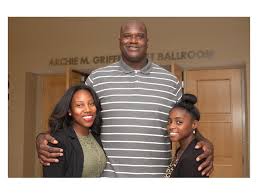 The first step I stress to all of my managers in building a loyal team is the importance of the interview process.
The first step I stress to all of my managers in building a loyal team is the importance of the interview process.
During your search you will hire for the attitude you want as part of your team. Most important is making sure there are several levels to your interview process.
In the after-school and youth development sector, with most positions being part-time, we are often faced with the dilemma of being short-staffed and trying to maintain a substantive, safe and fun program for the kids. This, at times, creates “rush hiring,” where it is tempting to fill an open position with a warm body.
Of course, I have seen this fail repeatedly, as many “rushed hires” pass the initial smell test, but later show inadequacies in ability and non-commitment to the organization. This is why it is important to have a multi-layered interview process and allow several management-level staff members play a role in interviewing a candidate.
Your search process should include:
- pre-screens
- behavior assessments
- practical experiences
A thorough interview process will allow you to gain a fairly solid picture of what the applicant could bring to the table as an employee.
I believe most important to this process is conducting behavioral interviews. Why? Because one’s past behavior is the best predictor for future behavior. Interview questions should begin with, “Tell me about a time when . . .”
The interview process is the first step towards developing a supportive and trusting relationship with your employees.
Acclimatizing Your People
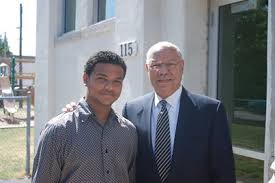 Once hired, make sure the new employee participates in an immediate on-boarding process and orientation to the organization.
Once hired, make sure the new employee participates in an immediate on-boarding process and orientation to the organization.
- Has (s)he reviewed your Employee Handbook?
- Has (s)he seen her/his official job description?
- Has (s)he learned about the organization, its history and its values?
It is important during the first couple of weeks to make sure the new employee’s manager spends as much time with them. Slowly acclimatizing her/him to the organization may be hectic, especially when you’re short-staffed, but it will pay off in the long-run.
It is also critical during this time to build a one-on-one relationship with the new employee as well as with the rest of the team.
- Allow time for the new employee to shadow her/his new co-workers
- organize staff get-togethers (outside of work hours)
- make sure staff meetings incorporate team-building activities
Whatever your process may be, it is most important to remember that consistency, communication and collaboration are all necessary actions for any on-boarding and orientation plan and for building long-term loyalty.
Retaining and Keeping Your Talent
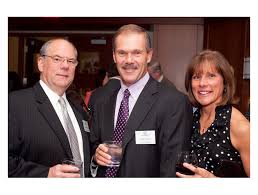 After the honeymoon phase and the initial adrenaline of starting something new, the “real work” is just beginning for the person managing a new employee. The staff manager has the unenviable job of figuring out how to retain talent and simultaneously build a team.
After the honeymoon phase and the initial adrenaline of starting something new, the “real work” is just beginning for the person managing a new employee. The staff manager has the unenviable job of figuring out how to retain talent and simultaneously build a team.
In my current role, most of my time is focused on staff development and creating a work culture that brings out the best in everyone.
I have tried many different things to engage our staff and make our organization a fun place. One of the first things we did was make sure that all staff had a role in defining our organization’s shared values. This effort was instrumental in establishing the process we now use for making all sorts of strategic and operational decisions.
To create a loyal team, your employees must feel a part of every decision. Employees need to know their voices are heard and valued, and that their ideas are considered.
Additionally, our organization’s managers develop their people through a strengths-based approach.Considerable time, effort and expense is taken to do this, and we’ve been able to learn the areas in which our people have the greatest opportunity for success.
Of course, we also identify areas of development for our people, which is how we focus on ensuring all employees are well-rounded and no one feels like they are being set-up to fail.
Loyalty is built when employees feel like their employer is as invested in their growth as they are invested in achieving the agency’s mission.
Finally, we ensure that our staff leaders operate with what Sean Covey describes as a “cadence of accountability.”
It is a requirement for our leaders to have a minimum of one, dedicated touch-point with each of their employees per week.
Our staff leaders work with their employees on creating a development plan, and the weekly touch-point meetings focus on the employee’s development and success.
Consistency in this regard makes an immeasurable difference in creating a loyal team.
Bringing It Together
 While Boys & Girls Clubs of Columbus allows each of our five programs to have its own identity, we strive for something that we call a “One Club Feel.” This, to me, is the most important part of my job and truest test of my success (or failure) as a leader.
While Boys & Girls Clubs of Columbus allows each of our five programs to have its own identity, we strive for something that we call a “One Club Feel.” This, to me, is the most important part of my job and truest test of my success (or failure) as a leader.
I spend endless hours, days, weeks and months working to solidify a dynamic, diverse group of professionals to lead our programs. Most have come through past professional experiences or by recommendation from trusted colleagues, which makes the goal of establishing a loyal team a lot easier and attainable.
While it is great when my direct reports and program managers possess leadership qualities, frankly it isn’t enough. The following is a short list of other things I work hard at doing when coaching them on how to coach their team:
- identifying each leader’s strengths
- investigating areas for development
- developing a communication style and leadership style
In addition to coaching, our agency developed common goals and lead measures to which each leader is committed. While each staff leader has different numbers to reach, all leaders have the same goal and lead measures. This allows our management team to speak the same language when planning our staff meetings, staff trainings, and even our staff get-togethers.
Our dedication to coaching and planning helps us build loyalty and trust, which in turn has enabled our organization to grow exponentially over the past four years.
Rarely would I ever try to compare the loyalty of my beloved Shetland Sheepdog — Ollie — to anyone (or anything). However, if there are humans who are in the same loyalty-hemisphere as Ollie, then it’s our team!
=================================
If you want to learn more about what other non-profit organizations are doing to build loyalty among various stakeholder groups (e.g. donors, employees, volunteers, etc), then tune in here to DonorDreams blog every Tuesday and Thursday throughout the month of May. We will also publish the Nonprofit Blog Carnival on May 28, 2014 with a number of links to other non-profit bloggers who are talking about loyalty related themes.
Here’s to your health!
Erik Anderson
Founder & President, The Healthy Non-Profit LLC
www.thehealthynonprofit.com
erik@thehealthynonprofit.com
http://twitter.com/#!/eanderson847
http://www.facebook.com/eanderson847
http://www.linkedin.com/in/erikanderson847
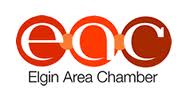 Not all non-profit organizations are the same. Social service agency are different from arts organizations, and colleges/universities have different wrinkles than churches. However, the differences in many cases are slight and everyone can always learn from each other if they just look hard enough for the teachable moment. So, it didn’t come as a surprise to me that I learned a lot about how to build loyalty from Carol Gieske, President of the Elgin Area Chamber of Commerce, a few weeks ago.
Not all non-profit organizations are the same. Social service agency are different from arts organizations, and colleges/universities have different wrinkles than churches. However, the differences in many cases are slight and everyone can always learn from each other if they just look hard enough for the teachable moment. So, it didn’t come as a surprise to me that I learned a lot about how to build loyalty from Carol Gieske, President of the Elgin Area Chamber of Commerce, a few weeks ago. Every good planning process begins with some form of evaluation. It could look like a SWOT analysis. It could be significantly more intensive and involve going through an accreditation process. Regardless of what evaluation process you use, good planning starts with evaluation because it is difficult to figure out where you want to go if you don’t know where you are currently.
Every good planning process begins with some form of evaluation. It could look like a SWOT analysis. It could be significantly more intensive and involve going through an accreditation process. Regardless of what evaluation process you use, good planning starts with evaluation because it is difficult to figure out where you want to go if you don’t know where you are currently.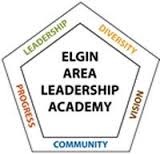 Another loyalty strategy upon which Carol and the chamber of commerce focus is affinity groups. While this term takes on many different meanings, in chamber circles it simply involves bring like-minded people together to talk about their similar interests. The following are a few examples of affinity groups:
Another loyalty strategy upon which Carol and the chamber of commerce focus is affinity groups. While this term takes on many different meanings, in chamber circles it simply involves bring like-minded people together to talk about their similar interests. The following are a few examples of affinity groups:
 My first days (and those leading up to) as the Director of Operations for the
My first days (and those leading up to) as the Director of Operations for the  Team vs. Group
Team vs. Group The first step I stress to all of my managers in building a loyal team is the importance of the interview process.
The first step I stress to all of my managers in building a loyal team is the importance of the interview process. Once hired, make sure the new employee participates in an immediate on-boarding process and orientation to the organization.
Once hired, make sure the new employee participates in an immediate on-boarding process and orientation to the organization. After the honeymoon phase and the initial adrenaline of starting something new, the “real work” is just beginning for the person managing a new employee. The staff manager has the unenviable job of figuring out how to retain talent and simultaneously build a team.
After the honeymoon phase and the initial adrenaline of starting something new, the “real work” is just beginning for the person managing a new employee. The staff manager has the unenviable job of figuring out how to retain talent and simultaneously build a team. While Boys & Girls Clubs of Columbus allows each of our five programs to have its own identity, we strive for something that we call a “One Club Feel.” This, to me, is the most important part of my job and truest test of my success (or failure) as a leader.
While Boys & Girls Clubs of Columbus allows each of our five programs to have its own identity, we strive for something that we call a “One Club Feel.” This, to me, is the most important part of my job and truest test of my success (or failure) as a leader.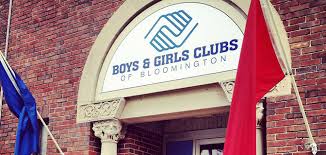 “It is all about relationships,” explained
“It is all about relationships,” explained 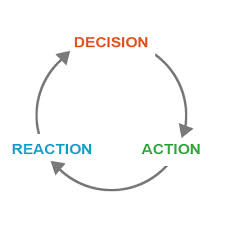 In addition to these individualized sit down meetings with the executive director, the Club invests time and resources in a variety of other donor stewardship activities including:
In addition to these individualized sit down meetings with the executive director, the Club invests time and resources in a variety of other donor stewardship activities including: Welcome to May! While this month represents lots of things to lots of people (e.g. rain, flowers, planting gardens, non-profit conferences, etc), May is an anniversary month for
Welcome to May! While this month represents lots of things to lots of people (e.g. rain, flowers, planting gardens, non-profit conferences, etc), May is an anniversary month for  People often ask, “What is the difference between deferred giving, planned giving and charitable gift planning? Isn’t it all the same?” Certainly there have been times in the past when these terms were commonly interchangeable. That was absolutely the case when I entered the field 25 years ago. But over the years, most practitioners have taken to using “charitable gift planning” for a number of good reasons.
People often ask, “What is the difference between deferred giving, planned giving and charitable gift planning? Isn’t it all the same?” Certainly there have been times in the past when these terms were commonly interchangeable. That was absolutely the case when I entered the field 25 years ago. But over the years, most practitioners have taken to using “charitable gift planning” for a number of good reasons.
 Approximately 14 years ago, I was a young and eager executive director of a non-profit organization in Elgin, Illinois. While I had already worked in a number of different capacities in the non-profit sector, it was the first time I had held the job of “executive director.” Thinking back to that time in my life is where I pull my inspiration for the May 2014
Approximately 14 years ago, I was a young and eager executive director of a non-profit organization in Elgin, Illinois. While I had already worked in a number of different capacities in the non-profit sector, it was the first time I had held the job of “executive director.” Thinking back to that time in my life is where I pull my inspiration for the May 2014 
 How to submit your work for consideration?
How to submit your work for consideration? Miscellaneous details?
Miscellaneous details?
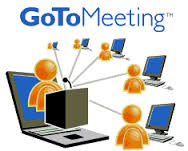 There is no doubt that as the recession hit many organizations began to cut costs. One of the first areas cut was staff development (e.g. conferences, travel expenses, etc). These expenditured became more of a luxury as donations declined and funding became more uncertain.
There is no doubt that as the recession hit many organizations began to cut costs. One of the first areas cut was staff development (e.g. conferences, travel expenses, etc). These expenditured became more of a luxury as donations declined and funding became more uncertain.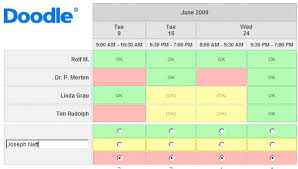 Doodle is one of my favorites. As an Executive Director I would constantly have to convene meetings between groups of people. It was more than frustrating to go back and forth in e-mails trying to figure out a time when people could meet.
Doodle is one of my favorites. As an Executive Director I would constantly have to convene meetings between groups of people. It was more than frustrating to go back and forth in e-mails trying to figure out a time when people could meet.
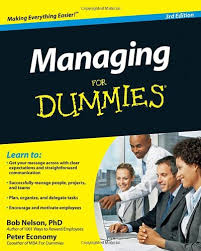
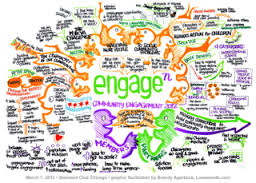 Here is how that new top ten list turned out for
Here is how that new top ten list turned out for 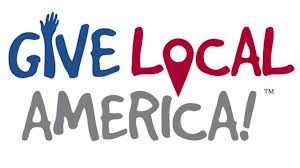 I may not be the sharpest knife in the drawer, but when I get beat over the head with something enough times over the course of a year it becomes obvious that I’m staring at a trend. LOL! In this case, I am referencing an increasingly popular activity sprouting up all over the place — Giving Day.
I may not be the sharpest knife in the drawer, but when I get beat over the head with something enough times over the course of a year it becomes obvious that I’m staring at a trend. LOL! In this case, I am referencing an increasingly popular activity sprouting up all over the place — Giving Day. As I started playing around with these ideas in my head, I’ve come to the conclusion that this doesn’t necessarily have to be a community-wide event sponsored by a community foundation or a United Way. (However, I do think a community-wide approach organized by a foundation or United Way is preferable)
As I started playing around with these ideas in my head, I’ve come to the conclusion that this doesn’t necessarily have to be a community-wide event sponsored by a community foundation or a United Way. (However, I do think a community-wide approach organized by a foundation or United Way is preferable)